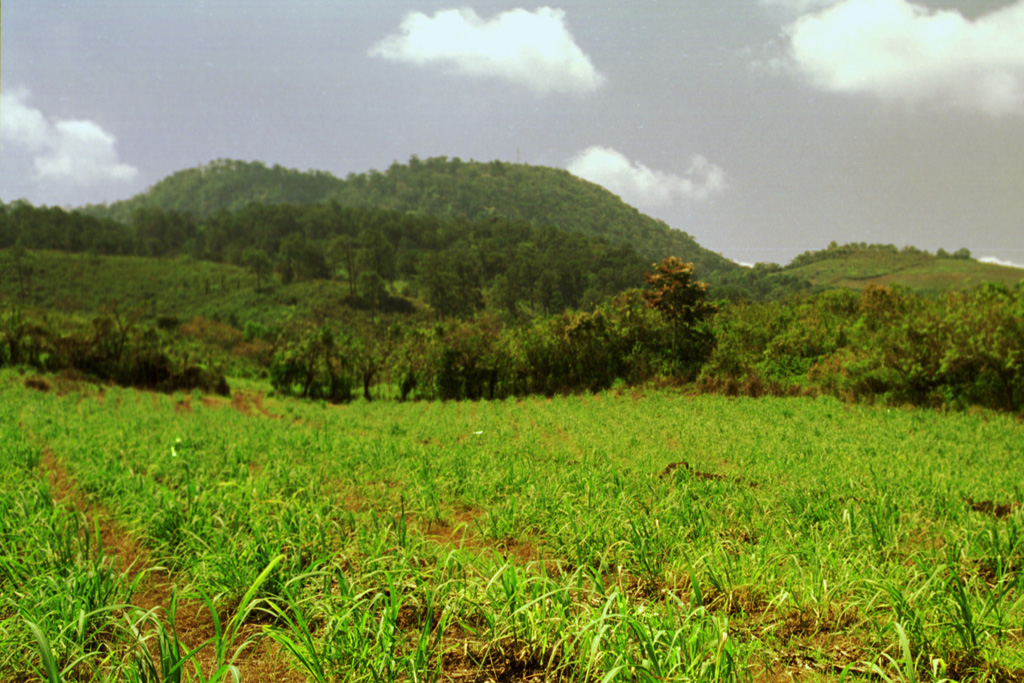Global Volcanism Program | Image GVP-08157

This eastern side of forested Cerro Babilonia cinder cone rises above fields north of Lake Yojoa in north-central Honduras. The 1090-m-high cone is the highest of a chain of Pleistocene-to-Holocene scoria cones at the northern end of the lake. The cones were constructed along orthogonal NW-SE- and NE-SW-trending lines and consist of basaltic scoria and agglutinate. The are typically 100-200 m in height and several contain well-preserved craters. Lava flows radiate in all directions from the cones.
Photo by Rick Wunderman, 1999 (Smithsonian Institution).
![]() This image is made available under the Public Domain Dedication CC0 license, but proper attribution is appreciated.
This image is made available under the Public Domain Dedication CC0 license, but proper attribution is appreciated.

Lago Yojoa
